first-price auction
description: common type of auction where all bidders simultaneously submit sealed bids so that no bidder knows the bid of any other participant
13 results
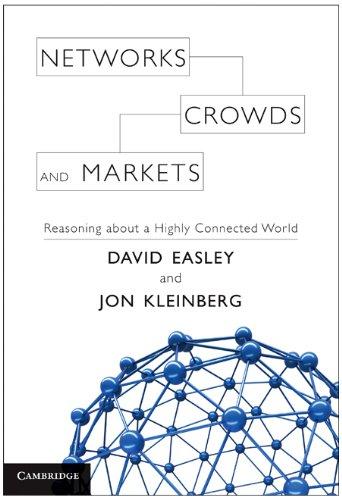
Networks, Crowds, and Markets: Reasoning About a Highly Connected World
by
David Easley
and
Jon Kleinberg
Published 15 Nov 2010
In other words, truthful bidding is a good idea even if the competing bidders in the auction don’t know that they ought to be bidding truthfully as well. We now turn to first-price auctions, where we’ll find that the situation is much more complex. In particular, each bidder now has to reason about the behavior of her competitors in order to arrive at an optimal choice for her own bid. 9.5. FIRST-PRICE AUCTIONS AND OTHER FORMATS 267 9.5 First-Price Auctions and Other Formats In a sealed-bid first-price auction, the value of your bid not only affects whether you win but also how much you pay. As a result, most of the reasoning from the previous section has to be redone, and the conclusions are now different.
…
For example, it is intuitively natural that your bid should be higher — i.e. shaded less, closer to your true value — in a first-price auction with many competing bidders than in a first-price auction with only a few competing bidders (keeping other properties of the bidders the same). This is simply because with a large pool of other bidders, the highest competing bid is likely to be larger, and hence you need to bid higher to get above this and be the highest bid. We will discuss how to determine the optimal bid for a first-price auction in Section 9.7. All-pay auctions. There are other sealed-bid auction formats that arise in different settings.
…
The determination of an optimal bid in an all-pay auction shares a number of qualitative features with the reasoning in a first-price auction: in general you want to bid below your true value, and you must balance the trade-off between bidding high (increasing your probability of winning) and bidding low (decreasing your expenditure if you lose and increasing your payoff if you win). In general, the fact that everyone must pay in this auction format means that bids will typically be shaded much lower than in a first-price auction. The framework we develop for determining optimal bids in first-price auctions will also apply to all-pay auctions, as we will see in Section 9.7. 9.6 Common Values and The Winner’s Curse Thus far, we have assumed that bidders’ values for the item being auctioned are independent: each bidder knows her own value for the item, and is not concerned with how much it is worth to anyone else.

Model Thinker: What You Need to Know to Make Data Work for You
by
Scott E. Page
Published 27 Nov 2018
It follows that in a second-price auction, the bidder with the highest value wins the auction, and the amount paid equals the second-highest bidder’s value. In a first-price auction, each participant submits a bid, and the highest bid wins, with the bidder paying an amount equal to that bid. As in a second-price auction, the bids are submitted simultaneously, so no one knows the others’ bids. A participant’s optimal bidding strategy in a first-price auction depends on the participant’s belief about the values (and therefore the likely bids) of the other bidders. We will assume that bidders do not know other bidders’ values but that they do have correct beliefs about the distribution over those values.
…
Similarly, in a second-price auction, a bidder should always follow the same strategy of bidding her true value. However, figuring out that truthful bidding is optimal requires multiple steps of logic. Recall that dominant strategies are optimal regardless of the strategies of others. Both ascending-bid and second-price auctions have dominant strategies. First-price auctions do not. In a first-price auction, changes in the bidding strategy of one bidder can change the optimal strategy for another bidder. If one bidder always bids either zero or 50, then the other bidder should always bid either 1 or 51. There would be no reason to bid 60 or 70 as the winner would pay more for the object than necessary.
…
Finally, in the first-price auction and the ascending-bid auction, the price equals the highest bid. In the second-price auction, it equals the second-highest bid. This leaves the appearance that the seller could have received a higher price and, in part, explains why governments do not use second-price auctions. Imagine the headline if a government received three bids for oil rights, one at $6 million, one at $8 million, and one at $12 million: “Government Gets $12 Million Bid but Sells Land for $8 Million.” Anyone who knows auction theory would know that had the government run a first-price auction or an ascending-bid auction, then the top bid would not have been $12 million.

Algorithms to Live By: The Computer Science of Human Decisions
by
Brian Christian
and
Tom Griffiths
Published 4 Apr 2016
You do not need to strategize or recurse. Now, it seems like the Vickrey auction would cost the seller some money compared to the first-price auction, but this isn’t necessarily true. In a first-price auction, every bidder is shading their bid down to avoid overpaying; in the second-price Vickrey auction, there’s no need to—in a sense, the auction itself is optimally shading their bid for them. In fact, a game-theoretic principle called “revenue equivalence” establishes that over time, the average expected sale price in a first-price auction will converge to precisely the same as in a Vickrey auction. Thus the Vickrey equilibrium involves the same bidder winning the item for the same price—without any strategizing by any of the bidders whatsoever.
…
In fact, many global markets, in everything from homes to books to tulips, operate via auctions of various styles. One of the simplest auction formats has each participant write down their bid in secret, and the one whose bid is highest wins the item for whatever price they wrote down. This is known as a “sealed-bid first-price auction,” and from an algorithmic game theory perspective there’s a big problem with it—actually, several. For one thing, there’s a sense in which the winner always overpays: if you value an item at $25 and I value it at $10, and we both bid our true valuations ($25 and $10), then you end up buying it for $25 when you could have had it for just a hair over $10.
…
The name references the Aalsmeer Flower Auction, the largest flower auction in the world, which takes place daily in the Netherlands—but Dutch auctions are more prevalent than they might initially seem. A store marking down its unsold items, and landlords listing apartments at the highest price they think the market will bear, both share its basic quality: the seller is likely to begin optimistically and nudge the price down until a buyer is found. The descending auction resembles the first-price auction in that you’re more likely to win by paying near the top of your range (i.e., you’ll be poised to bid as the price falls to $25), and therefore will want to shade your offer by some complexly strategic amount. Do you buy at $25, or stay your hand and try to wait for a lower price? Every dollar you save risks losing out altogether.
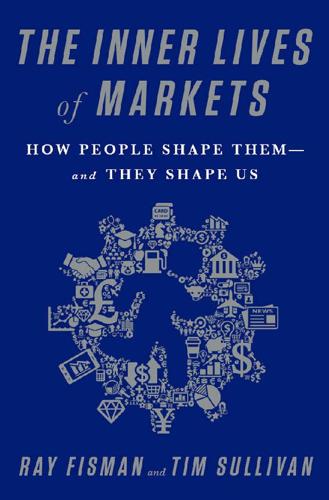
The Inner Lives of Markets: How People Shape Them—And They Shape Us
by
Tim Sullivan
Published 6 Jun 2016
Thus, supposing either of these parties receives two bids on one lot of 20 and 25 cents apiece, they would start the lot at 21 cents, at which price it would be given to the person sending the 25 cent order, unless some one present advanced, when they would continue to bid, stopping at the limit of 25 cents . . . Persons sending bids should give the number of the lots and the highest price they are willing to give, when the lot will be bought for them as low as possible consistent with the representation of other bids. In a live (first-price) auction, a bidder keeps raising his paddle until the price goes above what he’s willing to pay for the lot that’s up for bid. And what price do we expect the winner to ultimately pay? If there are just two bidders who value the lot at 20 and 25 cents, respectively, the first will stay in the running until the price hits 21 cents, at which point the gavel will fall.
…
Suppose, for the sake of argument, that Henry set the value of the right to negotiate with Matsuzaka at $60 million. That is, for a price of $60 million, he’d take it. If it were a dollar more, he’d walk away. (Of course, we’ll never know what his walk-away price was, beyond the fact that it was above $51,111,111.11.) In a first-price auction, we’ve already seen that it’s not clear where Henry should set his bid—sure, it should be less than $60 million, but how much less? For each dollar you drop your bid, you’re less and less likely to come out on top. But then again, you’re a dollar richer if you do. In a second-bid auction, there would’ve been no such uncertainty as to what Henry should’ve bid.
…
The Problems with Vickrey Auctions Vickrey probably wouldn’t have been troubled by the fact that online shoppers don’t care much for his auction; he was, after all, far more interested in allocation decisions of larger social consequence. But his design also sees scarce application in areas like government procurement, which had been Vickrey’s primary motivation for building something better than a first-price auction in the first place. Nor has the Vickrey auction seen much action in the sale of state assets, where it matters not just how much revenue is generated but also that the asset—whether an oil concession or wireless spectrum—goes to the bidder who values it the most (because, it is presumed, he will make the most productive use of it).

Understanding Sponsored Search: Core Elements of Keyword Advertising
by
Jim Jansen
Published 25 Jul 2011
., there is no use in bidding extremely high to try and force a competitor to bid higher, to really “win” the top space, etc.). From an overall auction perspective, this has the advantage of keeping the auction stable, with few wide or wild price swings once the auction reaches a point of stability. This is especially true relative to a first-price auction [22] (i.e., you pay what you bid). The first-price auction has no point of equilibrium or stability, so the bids can constantly be in flux. However, stability is a range, not an exact point, and there can be situations in a sponsored-search auction where it may be advantageous to bid somewhat higher than optimal to hurt a competitor [c.f., 23].
…
Advertisements for these Web sites appeared on the search engine results page, and the ad displayed based on the searcher was actively seeking at the time. The conceptualization was relatively straightforward, with a transparent ranking factor (i.e., money), advertisers bidding on exact phrases, and editors checking for relevance. This concept is a first-price auction, where the top bidder gets the top advertising position. GoTo.com also provided nonsponsored listings, provided by Inktomi.com. Potpourri: GoTo.com was the rebranded search engine, World-Wide Web Worm, which was the first Web search engine. Created in September 1993 by Oliver McBryan at the University of Colorado, the World-Wide Web Worm is the grandfather of all Web search engines.
…
Google’s first sponsored-search auction was in February 2002, adopting Overture’s pay-per-click revenue model, but they continued their sales-by-impression model in parallel [12] before finally dropping it altogether in favor of the pay-per-click model. Additionally, Google’s sponsored-search model was introduced with some significant changes relative to the Overture model. First, developers of Google’s AdWords platform changed the pricing scheme from a first-price auction to a more stable second-price auction. In a single-item second-price auction, the highest bidder wins but only pays the second-highest bid price plus some small delta, which is a fancy word for additional amount. (Note: We’ll discuss the significance of this in Chapter 8 where we cover bidding practices.)
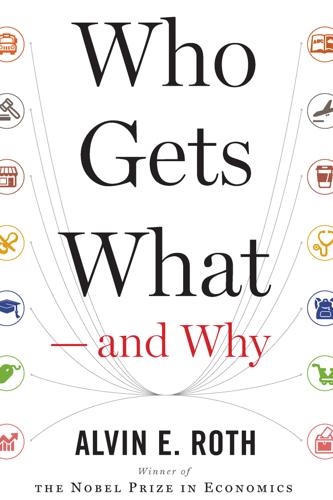
Who Gets What — and Why: The New Economics of Matchmaking and Market Design
by
Alvin E. Roth
Published 1 Jun 2015
In contrast, a sealed bid auction, in which you can’t see when the other bidders drop out, might make it risky to bid at all, since a company with an unrealistically high estimate of how much recoverable oil is in the ground might suffer the “winner’s curse”—that is, win the auction only because it overestimated the value of winning and paid too much. But first-price auctions, in which the winning bidder pays what she bids, have their own charms and exist in many varieties. One version of a first-price auction is used to sell cut flowers in bulk, in a “descending bid” auction. The auctioneer sets up a “clock” that has the current bid on it, starting with a very high bid and quickly descending, until some bidder stops the clock by offering the price it currently shows, which is higher than any of the other bidders have offered to pay, as they haven’t already stopped the clock.
…
Notice that while a second-price auction makes it safe for bidders to bid the true value to them, it doesn’t necessarily impose a cost on the seller, even though the seller receives only the amount of the second-highest bid. That’s because in a first-price sealed bid auction, for example, it isn’t safe for bidders to bid their true value; they have to bid less than that if they are going to make any profit, since if they win the auction, they will have to pay the full amount of their bid. So the seller in a first-price auction receives the amount of the highest bid, which is, however, less than the true value of the highest bidder. By comparison, in a second-price auction, the seller receives only the second-highest bid, but the bids are higher. That is, when the rules of the auction change, the bids change, too.
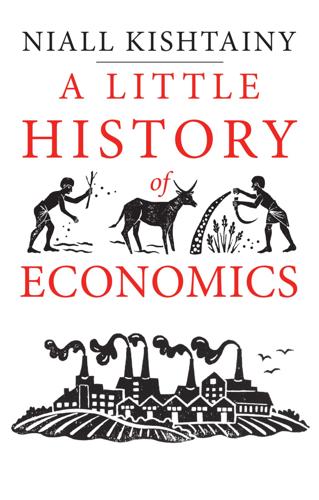
A Little History of Economics
by
Niall Kishtainy
Published 15 Jan 2017
Shading your bid in a first-price sealed-bid auction is risky. If you bid £250,000 for a house that you value at £300,000 then you might win and make a £50,000 profit, but you might be outbid and end up with nothing. If you hate risk you’ll tend to shade less, perhaps bidding £290,000. In the first-price auction your aversion to risk makes you bid close to your true valuation, and that’s what you’ll pay if you win. In the second-price auction, you’d only have to pay the second-highest bid. In this case it’s possible that the seller would get more money in a first-price than a second-price auction. There are many different kinds of auctions in theory, but in the real world economists have to tailor their designs to the context.
…
absolute poverty (i) acid rain (i) adaptive expectations (i) adverse selection (i) advertising (i) agriculture (i), (ii), (iii) aid (i) Akerlof, George (i) alienation (i) Ambrose, St (i) animal spirits (i), (ii), (iii) antitrust policies (i) Apple (i) Aquinas, St Thomas (i), (ii) Aristotle (i) Arrow, Kenneth (i) ascending auction (i) Asian Tigers (i), (ii) Atkinson, Anthony (i), (ii) auction theory (i) auctions (i) Augustine of Hippo, St (i) austerity (i) balance of trade (i) banks and entrepreneurs (i) and interest rates (i) and loans (i) and monopoly capitalism (i), (ii) and speculation (i) see also Britain, Bank of England; central banks; independent central banks; World Bank battle of the methods (i) Becker, Gary (i) behavioural economics (i) benevolent patriarch (i) Beveridge, William (i) big push (i) Black Wednesday (i) bonds (i) bourgeoisie (i), (ii), (iii) brand image (i) Britain Bank of England (i) inflation (i) pegged currency (i) Second World War (i) war with China (i) war with South Africa (i) bubbles (i), (ii) Buchanan, James (i) budget deficit (i) Burke, Edmund (i) capabilities (i) capital (i) and growth (i) Marx on (i) Capital (Marx) (i) Capital in the Twenty-First Century (Piketty) (i) capitalism (i), (ii), (iii) and entrepreneurs (i) and governments (i) and the Great Depression (i) and the Great Recession (i) historical law of (i) Marx on (i) world (i) see also communism Capitalism and Freedom (Friedman) (i) Capitalism, Socialism and Democracy (Schumpeter) (i) capitalists (i), (ii), (iii), (iv) and imperialism (i), (ii), (iii) Marx on (i), (ii), (iii), (iv), (v) carbon tax (i) carbon trading permits (i) Carlyle, Thomas (i), (ii) Castro, Fidel (i), (ii) central banks (i), (ii), (iii), (iv), (v) central planning (i), (ii) chaebols (i) chain of being (i), (ii) Chamberlin, Edward (i) Chaplin, Charlie (i) Chicago Boys (i) Chicago school (i), (ii), (iii), (iv) China, war with Britain (i) Christianity, views on money (i) Churchill, Winston (i) classical dichotomy (i) classical economics (i), (ii), (iii), (iv), (v) coins (i), (ii) Colbert, Jean-Baptiste (i) colonies/colonialism (i), (ii), (iii), (iv) American (i) Ghana (i), (ii) commerce (i), (ii), (iii), (iv) communism (i) and the Soviet Union (i) Communist Manifesto, The (Engels and Marx) (i), (ii) comparative advantage (i), (ii) competition (i), (ii), (iii), (iv) Condorcet, Marquis de (i) Confessions of an Economic Heretic (Hobson) (i) conspicuous consumption (i) constitution (rules) (i) consumers (i), (ii), (iii), (iv) contagion, economic (i) core (i) Corn Laws (i), (ii) Cortés, Hernan (i) cost (i) creative destruction (i) Credit Crunch (i) crime, economic theory of (i) Cuba (i) currency (i), (ii) see also coins currency markets (i), (ii) currency reserves (i) Debreu, Gérard (i) demand law of (i) see also supply and demand demand curve (i) democracy (i), (ii) Democratic Republic of the Congo (i) dependency theory (i) Depression (Great) (i), (ii), (iii), (iv), (v), (vi), (vii) and economic growth (i) and the US central bank (i) descending auction (i) developing/underdeveloped countries (i), (ii) development economics (i) Development of Underdevelopment, The (Frank) (i) diminishing marginal utility (i), (ii) diminishing return to capital (i) discretion (i) discrimination coefficient (i) distribution of income (i), (ii) diversification (i), (ii) dividends (i) division of labour (i) doomsday machines (i) Drake, Sir Francis (i) Drew, Daniel (i) dual economy (i) economic value (i), (ii), (iii), (iv) economics defined (i) normative (i) Economics of Imperfect Competition (Robinson) (i) economies of scale (i) economists (i), (ii), (iii) efficient markets hypothesis (i), (ii), (iii), (iv) efficient/inefficient economic outcome (i) see also pareto efficiency; pareto improvement Elizabeth I (i) Elizabeth II (i) employment, full (i) Engels, Friedrich (i) England’s Treasure by Forraign Trade (Mun) (i) entitlement (i), (ii) entrepreneurs (i), (ii) equilibrium (i), (ii), (iii), (iv), (v) exchange of goods (i), (ii) exchange rates (i) expectations, adaptive/rational (i), (ii), (iii), (iv) exploitation (i), (ii), (iii), (iv), (v) exports (i) and poor countries (i), (ii), (iii) externalities (i), (ii), (iii), (iv) Extraordinary Popular Delusions and the Madness of Crowds (MacKay) (i) failure, market (i), (ii), (iii), (iv) Fama, Eugene (i) famine (i), (ii), (iii), (iv) feminist economics (i) feudalism (i), (ii), (iii), (iv) financial systems (i), (ii) Finer, Herman (i) first price auction (i), (ii) First Welfare Theorem (i), (ii) First World War (i) fiscal policy (i), (ii) floating exchange rate (i) Florence (i) Folbre, Nancy (i) Fourier, Charles (i) framing (i), (ii) France agriculture (i) economic models (i), (ii) revolution (i), (ii), (iii), (iv) and taxation (i) Frank, Andre Gunder (i) free choice (i), (ii) free-market economics (i), (ii), (iii), (iv) free trade (i), (ii), (iii) Friedman, Milton (i), (ii), (iii) full employment (i) game theory (i), (ii), (iii) general equilibrium (i), (ii), (iii), (iv) General Theory of Employment, Interest and Money, The (Keynes) (i) Germany, infant industries (i) Ghana (i), (ii) Gilded Age (i) Global Financial Crisis (i), (ii) global warming (i) Goethe, Johann Wolfgang (i) gold (i), (ii) Golden Age (i) goods and services (i) government, and economies (i), (ii), (iii), (iv), (v), (vi), (vii) Great Moderation (i), (ii) Great Recession (i) Greece (i), (ii), (iii) gross domestic product (i) growth (i) and dependency theory (i) of government (i) and the Great Moderation (i) and Pakistan (i) and population (i) theory (i) Guevara, Ernesto ‘Che’ (i), (ii) guilds (i) Hamilton, Alexander (i) Hansen, Alvin (i) harmony, system of (i) Hayek, Friedrich (i), (ii) hedge funds (i) herds (i) Hicks, John (i) historical law of capitalism (i) HIV/AIDS (i) Hobson, John (i) Homobonus, St (i) human capital (i) human development (i), (ii) Human Development Index (i) imperfect competition (i), (ii) imperialism (i) Imperialism: The Highest Stage of Capitalism (Lenin) (i) imports (i), (ii), (iii) income (i), (ii) and bank loans (i) and capitalism (i) and communism (i) distribution of (i), (ii) and growth (i), (ii) national (i), (ii), (iii), (iv), (v) income per person (i), (ii) independent central banks (i) Industrial Revolution (i), (ii), (iii), (iv), (v) inequality (i), (ii) infant industries (i) inflation (i), (ii), (iii), (iv), (v) information economics (i), (ii), (iii) injection of spending (i) innovations (i), (ii) insurance (i), (ii) interest rates (i) British (i) and monetary policy (i) and recession (i) and usury (i) International Monetary Fund (i) investment (i) and the big push (i) and recession (i), (ii) invisible hand (i), (ii), (iii), (iv), (v) iron law of wages (i) Irrational Exuberance (Shiller) (i) Jefferson, Thomas (i) Jevons, William (i) just price (i) Kahneman, Daniel (i), (ii) Kennedy, John F.
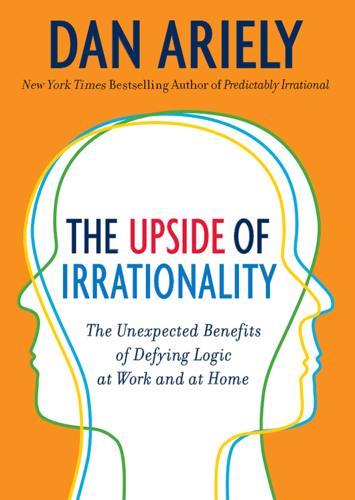
The Upside of Irrationality: The Unexpected Benefits of Defying Logic at Work and at Home
by
Dan Ariely
Published 31 May 2010
.* In contrast, if you were bidding using a first-price bidding procedure, you should take into consideration both your own love for the object and how much you think others will bid for it. Why do we need this complexity? Here is the logic: if the creators realized that they were uniquely overimpressed with their own frogs and cranes, they would bid more when using the second-price auction (when only their value matters) than when using the first-price auction (when they should also take into account the values of others). In contrast, if the creators did not realize that they were the only ones who overvalued their origami and they thought that others shared their perspective, they would bid a similarly high amount in both bidding procedures. So did the origami builders understand that others didn’t see their creations as they did?
…
In contrast, if the creators did not realize that they were the only ones who overvalued their origami and they thought that others shared their perspective, they would bid a similarly high amount in both bidding procedures. So did the origami builders understand that others didn’t see their creations as they did? We found that creators bid the same amount when they considered only their own evaluation for the product (second-price auction) as when they also considered what noncreators would bid for it (first-price auction). The lack of difference between the two bidding approaches suggested not only that we overvalue our own creations but also that we are largely unaware of this tendency; we mistakenly think that others love our work as much as we do. The Importance of Completion Our experiments on creation and overvaluation reminded me of some skills I acquired while I was in the hospital.
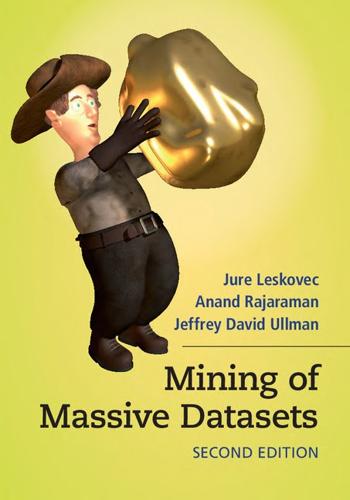
Mining of Massive Datasets
by
Jure Leskovec
,
Anand Rajaraman
and
Jeffrey David Ullman
Published 13 Nov 2014
Charging Advertisers for Clicks: In our simplified model, when a user clicks on an advertiser’s ad, the advertiser is charged the amount they bid. This policy is known as a first-price auction. In reality, search engines use a more complicated system known as a second-price auction, where each advertiser pays approximately the bid of the advertiser who placed immediately behind them in the auction. For example, the first-place advertiser for a search might pay the bid of the advertiser in second place, plus one cent. It has been shown that second-price auctions are less susceptible to being gamed by advertisers than first-price auctions and lead to higher revenues for the search engine. 8.4.5A Lower Bound on Competitive Ratio for Balance In this section we shall prove that in the simple case of the Balance Algorithm that we are considering, the competitive ratio is 3/4.
…
., 383, 414 False negative, 83, 93, 216 False positive, 83, 93, 132, 216 Family of functions, 94 Fang, M., 226 Fayyad, U.M., 265 Feature, 252, 297, 298 Feature selection, 421 Feature vector, 416, 455 Fetterly, D., 67 Fikes, A., 67 File, 21, 198, 215 Filtering, 130 Fingerprint, 107 First-price auction, 279 Fixedpoint, 96, 182 Flajolet, P., 153 Flajolet–Martin Algorithm, 134, 376 Flow graph, 39 Fortunato, S., 382 Fotakis, D., 382 French, J.C., 265 Frequent bucket, 208, 209 Frequent itemset, 4, 192, 201, 204, 340, 415 Frequent pairs, 202 Frequent-items table, 203 Freund, Y., 458 Friends, 326 Friends relation, 49 Frieze, A.M., 122 Frobenius norm, 388, 402 Furnas, G.W., 414 Gaber, M.M., 18 Ganti, V., 122, 265 Garcia-Molina, H., 18, 190, 226, 265, 382 Garofalakis, M., 153 Gaussian elimination, 159 Gehrke, J., 153, 265 Generalization, 421 Generated subgraph, 339 Genre, 297, 309, 321 GFS, see Google file system Ghemawat, S., 67 Gibbons, P.B., 153, 383 Gionis, A., 122, 153 Girvan, M., 382 Girvan–Newman Algorithm, 333 Global minimum, 314 GN Algorithm, see Girvan–Newman Algorithm Gobioff, H., 67 Golub, G.H., 414 Google, 155, 166, 276 Google file system, 22 Google+, 326 Gradient descent, 17, 320, 355, 442 Granzow, M., 414 Graph, 42, 54, 325, 326, 361, 368 Greedy algorithm, 270, 271, 274, 278 GRGPF Algorithm, 252 Grouping, 24, 31, 35 Grouping attribute, 31 Groupon, 329 Gruber, R.E., 67 Guha, S., 266 Gunda, P.K., 67 Gyongi, Z., 190 Hadoop, 22, 67 Hadoop distributed file system, 22 Hamming distance, 63, 91, 98 Harris, M., 321 Harshman, R., 414 Hash function, 8, 74, 78, 83, 129, 131, 134 Hash key, 9, 285 Hash table, 8, 10, 11, 200, 207, 209, 211, 285, 287, 362 Haveliwala, T.H., 190 HDFS, see Hadoop distributed file system Head, 372 Heavy hitter, 362 Henzinger, M., 122 Hierarchical clustering, 230, 232, 249, 310, 331 Hinge loss, 441 HITS, 182 Hive, 66, 67 Hopcroft, J.E., 374 Horn, H., 67 Howe, B., 67 Hsieh, W.C., 67 Hub, 182, 183 Hyperlink-induced topic search, see HITS Hyperplane, 436 Hyracks, 38 Identical documents, 111 Identity matrix, 386 IDF, see Inverse document frequency Image, 125, 297, 298 IMDB, see Internet Movie Database Imielinski, T., 226 Immediate subset, 218 Immorlica, N., 122 Important page, 155 Impression, 268 In-component, 159 Inaccessible page, 178 Independent rows or columns, 397 Index, 10, 362 Indyk, P., 122, 153 Initialize clusters, 242 Input, 54 Insertion, 90 Instance-based learning, 419 Interest, 196 Internet Movie Database, 297, 321 Interpolation, 450 Intersection, 31, 33, 38, 71 Into Thin Air, 295 Inverse document frequency, see also TF.IDF, 8 Inverted index, 155, 268 Ioannidis, Y.E., 382 IP packet, 125 Isard, M., 67 Isolated component, 160 Item, 191, 193, 194, 293, 308, 310 Item profile, 297, 299 Itemset, 191, 199, 201 Jaccard distance, 87, 88, 95, 298, 453 Jaccard similarity, 69, 77, 87, 177 Jacobsen, H.
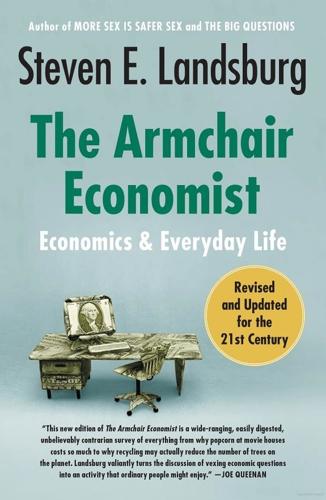
The Armchair Economist: Economics and Everyday Life
by
Steven E. Landsburg
Published 1 May 2012
Because bidders are unlikely to reveal their bidding strategies in advance of the auction, the seller can never know for certain on any given night whether an English auction is preferable to, say, a Dutch auction. Even to decide between a first-price and a second-price sealed bid auction can be difficult for the seller. On the one hand, in a first-price auction he collects the high bid, while in a second-price auction he collects only the amount of the second-highest bid. On the other hand, bidders generally submit higher bids in a second-price auction. They submit even higher bids in a third-price auction. Which is best for the seller? Again the answer depends on who shows up to bid, and what the bidders' strategies are.
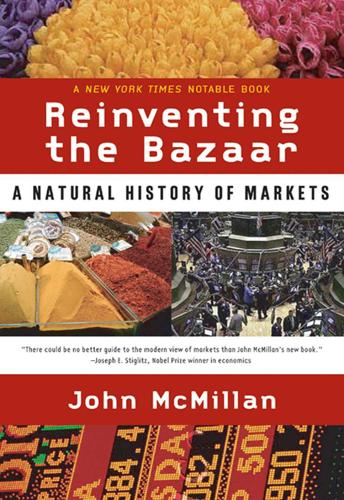
Reinventing the Bazaar: A Natural History of Markets
by
John McMillan
Published 1 Jan 2002
Another is the sealed-bid auction, in which there is a single round of sealed bids; the high bidder wins and pays his or her bid. Commercial real estate is sometimes sold this way. A variant is the second-price auction, in which there is a single round of bidding and the high bidder wins, but unlike first-price auctions, the price paid is the second-highest bid. Second-price auctions are used for selling stamps. eBay chose open auctions. Economic theory endorses this decision: the open auction yields, on average, a price that is closer to the item’s true value than do the other forms of auction.3 This is because bidders have more information in an open auction.
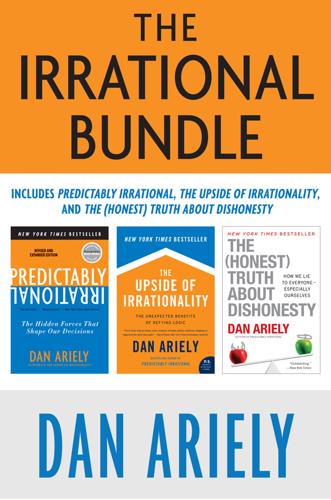
The Irrational Bundle
by
Dan Ariely
Published 3 Apr 2013
.* In contrast, if you were bidding using a first-price bidding procedure, you should take into consideration both your own love for the object and how much you think others will bid for it. Why do we need this complexity? Here is the logic: if the creators realized that they were uniquely overimpressed with their own frogs and cranes, they would bid more when using the second-price auction (when only their value matters) than when using the first-price auction (when they should also take into account the values of others). In contrast, if the creators did not realize that they were the only ones who overvalued their origami and they thought that others shared their perspective, they would bid a similarly high amount in both bidding procedures. So did the origami builders understand that others didn’t see their creations as they did?
…
In contrast, if the creators did not realize that they were the only ones who overvalued their origami and they thought that others shared their perspective, they would bid a similarly high amount in both bidding procedures. So did the origami builders understand that others didn’t see their creations as they did? We found that creators bid the same amount when they considered only their own evaluation for the product (second-price auction) as when they also considered what noncreators would bid for it (first-price auction). The lack of difference between the two bidding approaches suggested not only that we overvalue our own creations but also that we are largely unaware of this tendency; we mistakenly think that others love our work as much as we do. The Importance of Completion Our experiments on creation and overvaluation reminded me of some skills I acquired while I was in the hospital.

Artificial Intelligence: A Modern Approach
by
Stuart Russell
and
Peter Norvig
Published 14 Jul 2019
The German government got less than they expected, because the two competitors were able to use the bidding mechanism to come to a tacit agreement on how not to compete. From the government’s point of view, a better result could have been obtained by any of these changes to the mechanism: a higher reserve price; a sealed-bid first-price auction, so that the competitors could not communicate through their bids; or incentives to bring in a third bidder. Perhaps the 10% rule was an error in mechanism design, because it facilitated the precise signaling from Mannesman to T-Mobile. In general, both the seller and the global utility function benefit if there are more bidders, although global utility can suffer if you count the cost of wasted time of bidders that have no chance of winning.